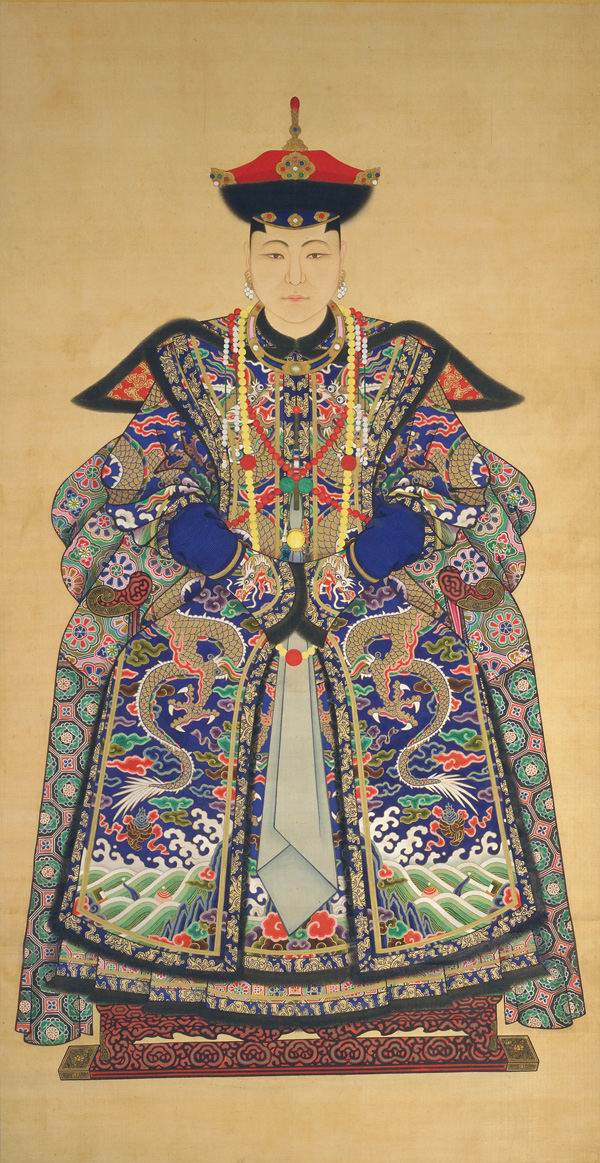| 贲然来思 |
2007-03-05 02:23 |
附:http://www.friendsofmd.org/data/2005report.pdf
2005年巴尔的摩马利兰之友基金会年度财务报告:其中有rpg先生的名字,大家可以通过该基金会与rpg先生本人联系。
附:存于资料库中的一篇关于捐献者rpg的文章,文章来自《古董》杂志2001年8月刊,对他的捐赠过程有兴趣的朋友可以阅读一下。
Chinese portraiture - antiques - Brief Article
Magazine Antiques, August, 2001 by Allison Eckardt Ledes
A byzantine tale lies behind the current exhibition of ancestral Chinese portraits on view at the Arthur M. Sackler Gallery in Washington, D.C. through September 9. The players are Richard G. Pritzlaff, an uncouth and irascible New Mexican rancher; H. Ross Perot, the outspoken Texas tycoon; Wu Lai-shi, an esteemed and elusive Peking art dealer; and Jan Stuart, the tenacious and intelligent associate curator of Chinese art at the Sackler Gallery. The Maltese falcon in this case was eighty-five hauntingly beautiful Chinese ancestor portraits and related artifacts.
In 1989 Mr. Pritzlaff telephoned the Sackler Gallery pointedly deriding the curatorial profession, but nonetheless offering his collection of more than one hundred paintings and other objects to the museum. He described the collection immodestly as one that would "forever change American opinion of Chinese art." Then eighty-seven years old, Pritzlaff was concerned about the future of his collection, the seed of which was planted in 1937 when he traveled to China and encountered the art dealer Wu. The latter had a knack for persuading descendants of Chinese nobles to part with their inherited treasures, including rare paintings and porcelains with imperial provenances. Chief among the collection were Chinese ancestral portraits, then a stepchild of Chinese art in which landscape paintings were ranked at the top of the artistic hierarchy.
In the early 1940s, changes in Chinese political tides, Wu's advancing age (he died around 1948), and impoverishment, caused Wu to send Pritzlaff a cache of paintings, which he hoped the collector would sell on his behalf. Instead, Pritzlaff held on to them, sending Wu as much money as he could.
Advertisement
By 1970 Pritzlaff was looking for ways to promote what he had, and he loaned some of his paintings to the Denver Art Museum. Negotiations for the transfer of the collection to that museum eventually came to naught. Enter Ross Perot, who in the mid-1980s was horse shopping with friends at Pritzlaff's ranch. There he was swept away by the Chinese collection, and after a return trip he purchased the majority of it with the intention of building a museum to house it. When that dream fell through, Pritzlaff became so irate that in 1987 he bought back his collection.
In 1990, following Pritzlaff's phone call, Stuart and a colleague traveled to the collector's adobe house in Sapello, New Mexico, which proved to be as idiosyncratic as its owner, who had designed it. For example, when he deemed the sunlight too harsh, Pritzlaff dug a hole in the floor and planted trees to form a natural screen, because he loathed shutters and curtains. Although the house was elegant, Stuart recalled that it had suffered from neglect and had holes in the roof. Paintings were installed in glass-fronted niches in the adobe walls on the exterior of the house under the shade of the verandah, while others were similarly installed in the interior or rolled up and placed in storage.
Stuart persevered, overcoming too many obstacles to recount here, and the collection eventually arrived at the Sackler Gallery where thirty-eight of Pritzlaffs ancestral portraits form the core of an exhibition entitled Worshiping the Ancestors: Chinese Commemorative Portraits. The exhibition has been made possible by a grant from Fidelity Investments through the Fidelity Foundation (which also donated funds to restore many of the works). The show not only includes ancestral portraits dating from 1451 to 1943, but also textiles, furniture, and other objects, many of them of the type that appear in the portraits.
Chinese rites of ancestor worship include offerings (among them food and incense) made to the deceased in the hope that the dead will bestow good fortune and prosperity on the living. These rites began in ancient times, but the incorporation of a likeness of the deceased dates from perhaps the Tang dynasty (618-907). The commissioning of nearly lifesized portraits of the type on view in this exhibition flourished during the Qing dynasty.
Much like Western sumptuary laws, the intricate rules of ancestor worship were strictly enforced. Those of highest rank were the first to be permitted to engage in this ritual, and it was not until the eighteenth century that commoners were allowed to participate. While the severely frontal, full-length ancestor portraits might at first seem formulaic, the depiction of the sitter's face is most individualistic. Since many of the portraits were commissioned after the sitter's death, they are most likely not accurate portrayals. By the late Ming dynasty separate portraits of husbands and wives were sometimes merged into one painting. In what is surely an ironic twist, these portraits, which were incorporated into the most private of rituals, are now permanently in the West and on exhibition for all to see.
COPYRIGHT 2001 Brant Publications, Inc.
COPYRIGHT 2001 Gale Group
|
|








 给苏墨尔画像也不是没有可能,圣祖对她应该是相当敬重的。1、圣祖儿时曾和苏墨尔学习满文。2、把皇子交给她抚养说明圣祖对其的信任。3、苏墨尔死后一直和孝庄一起停灵于暂安奉殿内,直到雍正八年下葬。
给苏墨尔画像也不是没有可能,圣祖对她应该是相当敬重的。1、圣祖儿时曾和苏墨尔学习满文。2、把皇子交给她抚养说明圣祖对其的信任。3、苏墨尔死后一直和孝庄一起停灵于暂安奉殿内,直到雍正八年下葬。